Resilience assessment workshops and beyond: Fostering adaptive co-management in Taiwan’s SEPLS
28.05.2023
SUBMITTING ORGANIZATION
Forestry Bureau, Council of Agriculture, Executive Yuan
National Dong Hwa University (NDHU)
OTHER CONTRIBUTING ORGANIZATIONS
National Pingtung University of Science and Technology (NPUST)
Dharma Drum Institute of Liberal Arts (DILA)
Taiwan Endemic Species Research Institute (TESRI)
DATE OF SUBMISSION
20/04/2023
REGION
Asia
COUNTRY
Chinese Taipei
KEYWORDS
adaptive co-management, resilience assessment workshops, Taiwan Partnership for the Satoyama Initiative, Taiwan Ecological Network
AUTHORS
1) Forestry Bureau, Council of Agriculture, Executive Yuan:
Dr. Hwa-Ching Lin, Director General
Ms. Yu-Chuan Lo, Director of Conservation Division
Dr. Chih-Chin Shih, Chief of Habitat Management Section of Conservation Division
Ms. Wei-Ya Chang, Staff of Habitat Management Section of Conservation Division
Mr. Chung-Jen Hsiao, Director of Luodong Forest District Office
Ms. Yu-Fei Hsiao, Associate Technical Specialist of Recreation Section of Luodong Forest District Office
Ms. Jung-Sheng Shia, Director of Hsinchu Forest District Office
Ms. Chia-Yu Lin, Technical Specialist of Recreation Section of Hsinchu Forest District Office
Mr. Hung-Yi Chang, Director of Dongshih Forest District Office
Ms. Ya-Ching Hsu, Technical Specialist of Recreation Section of Dongshih Forest District Office
Mr. Cheng-Hsien Lee, Director of Nantou Forest District Office
Ms. Chia-Ling Chang, Associate Technical Specialist of Recreation Section of Nantou Forest District Office
Mr. Tai Chang, Director of Chiayi Forest District Office
Mr. Tsung-Wei Wang, Associate Technical Specialist of Recreation Section of Chiayi Forest District Office
Ms. Jui-Fen Yang, Director of Pingtung Forest District Office
Ms. Chung-yueh Yang, Technical Specialist of Recreation Section of Pingtung Forest District Office
Mr. Chium-Tse Huang, Director of Hualien Forest District Office
Ms. Fang-Chia Hsu, Director of Yuli Ranger Stations of Hualien Forest District Office
Dr. Chang-Yu Wu, Director of Taitung Forest District Office
Ms. Hui-Chun Hsu, Technical Specialist of Recreation Section of Taitung Forest District Office
2) National Dong Hwa University (NDHU, TPSI-East):
Dr. Paulina G. Karimova, Post-doc Researcher
Ms. Hui-An He, Research Assistant
*Dr. Kuang-Chung Lee, Professor,
*corresponding author (kclee2000@gmail.com)
3) National Pingtung University of Science and Technology (NPUST, TPSI-South)
Dr. Mei-Hui Chen, Professor
4) Dharma Drum Institute of Liberal Arts (DILA, TPSI-North):
Dr. Hsin-Hsun Huang, Assistant Professor
5) Taiwan Endemic Species Research Institute (TESRI, TPSI-West):
Dr. Mei-Li Hsueh, Head of Interpretive Education Division
Summary Sheet
The summary sheet for this case study is available here.
Background (including socioeconomic, environmental characteristics of the area):
Taiwan Partnership for the Satoyama Initiative (TPSI) was established in 2015 as a network of satoyama-minded partners working on revitalisation of SEPLS in northern (TPSI-N), western (TPSI-W), southern (TPSI-S) and eastern (TPSI-E) parts of Taiwan. The Forestry Bureau has always been the main financial and institutional supporter of TPSI activities. (Please see our previous case studies to learn more about the establishment and development of TPSI.)
By 2020, five years since the establishment of TPSI, its four regional exchange bases (TPSI-N, W, S, and E) and eight forest district offices (subordinate to the Forestry Bureau) had already possessed rich experiences related to biodiversity conservation, sustainable production, and local livelihoods in SEPLS under their mentorship (Figure 1). On-the-ground networking, experience exchange and learning were also on the rise. A gap remained, however, in a comprehensive understanding of socio-ecological resilience in TPSI SEPLS – both a result of the efforts already made and for a sustainable adaptive co-management (ACM) in the future. In other words, “How are we doing?” and “What can we do better?” were the main questions to be answered.
This case study demonstrates the objectives, activities, outcomes, lessons learned and ways forward of the Satoyama Development Mechanism (SDM) 2020 project Development of locally sensitive indicators of resilience as a tool for adaptive landscape management in Taiwan’s SEPLS conducted by the Forestry Bureau and National Dong Hwa University (NDHU) in 2020-2021 and post-SDM project activities of 2022.

Abbreviations: DOFB – forest district office (subordinate to the Forestry Bureau); TPSI-N, -W, -S, and -E – northern, western, southern, and eastern regional exchange bases of Taiwan Partnership for the Satoyama Initiative (TPSI)
Objectives:
As a prerequisite to the project, in May-September 2020, NDHU had piloted a series of community-based resilience assessment workshops (RAWs) based on a set of localised indicators of resilience developed for the Xinshe SEPLS (Xinshe Village, Hualien County, Taiwan) as a monitoring and evaluation tool for the Xinshe “Forest-River-Village-Ocean” Eco-Agriculture Initiative (the Xinshe Initiative). Twenty original “Indicators of Resilience in SEPLS” (Bergamini et al., 2014) were restructured, rephrased, added, or removed in accordance with the local specifics of the Xinshe SEPLS. This exercise allowed to comprehensively assess environmental and socio-economic risks and resources, identify locally relevant issues, and comprehensively communicate the meaning of resilience and its indicators to multiple stakeholders (Sun et al., 2020; Karimova et al., 2022).
The success of the Xinshe experience and an effective integration of RAWs results within the adaptive co-management for the Xinshe Initiative encouraged us to test RAWs as a monitoring and evaluation tool for fostering adaptive co-management in other TPSI SEPLS. Thus, the main objectives of the project included: by learning from the experience with conducting RAWs in the Xinshe SEPLS and from integration of RAWs results into adaptive co-management of the Xinshe Initiative to:
(1) develop locally-sensitive indicators of resilience for eight TPSI SEPLS – mentored by eight forest district offices and four regional exchange bases of TPSI (Figure 1),
(2) conduct RAWs in eight TPSI SEPLS to (a) assess their socio-ecological resilience, (b) identify environmental and socio-economic risks and resources, and (c) elicit the most urgent issues and priority interventions for adaptive co-management in TPSI SEPLS, and
(3) examine the role of RAWs as a monitoring and evaluation tool for Taiwan’s national conservation policy – Taiwan Ecological Network (TEN).
Activities and outcomes:
(December 2020-April 2021): Production of publications, learning materials and training of trainers.
To allow the project partners (government officers, SEPLS communities and facilitating teams) to better understand the concept of resilience as a SEPLS health (Figure 2), environmental and socio-economic risks and resources (Karimova et al., 2022), processes of conducting RAWs, and application of their results to adaptive co-management in SEPLS, we produced several publications and learning materials. These included:
- Sun (Karimova), X.T. (P.G.); Yan S.Y., Lee, K.C. (2020). Localised resilience indicators for adaptive management: building up resilient SEPLS in Xinshe Village, Hualien County. Taiwan Forestry Journal, vol. 46 (6), pp. 58-80 (in Chinese) – explaining the procedure of RAWs and their role within adaptive co-management for the Xinshe Initiative.
- Lee K.C., Sun (Karimova), X.T. (P.G.), Yan S.Y., Chiu Y.H. (2021a). The Guidebook on Implementation of Community-based RAWs in TPSI SEPLS (in Chinese) – for providing a step-by-step guidance on developing a set of locally-sensitive indicators of resilience in SEPLS, on principles and procedures of conducting RAWs, and analysing RAWs results and their integration into existing/ or development of new action plans.
- Lee K.C., Sun (Karimova) X.T. (P.G.), Lo Y.C., Shih C.C., Chang Y.L., Chiu Y.H. (2021b). 2021-2030 Transformative Strategy Framework for the Satoyama Initiative in Taiwan. Taiwan Forestry Journal, vol. 47(2), pp. 15-22 (in Chinese) – explaining the role and potential of RAWs as a nationwide evaluation and monitoring tool for post-2020 adaptive co-management in TPSI SEPLS and its alignment with TEN’s objectives (2022-2025).
(References and links to all publications are provided in the Further Reading section below.)
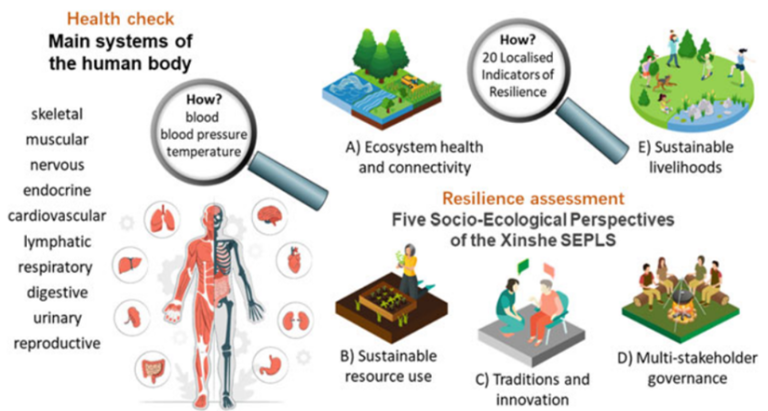
With the help of above publications and learning materials, we conducted a two-day Training Workshop on Implementation of Community-based RAWs in TPSI SEPLS (14-15 April 2021), which included both indoors (at NDHU) and outdoors (in the Xinshe SEPLS) activities (Figure 3 a, b). The workshop was attended by over 40 participants. Each case study SEPLS was represented by one government officer per forest district office, one or two members of each SEPLS community and, where applicable, one member of RAWs facilitation team (academia, NGO or ecological consultant company). The training process was supported and coordinated by TPSI-N, W, S, and E regional exchange bases.

(May 2021-October 2022): Conducting RAWs in eight TPSI SEPLS and fostering of RAWs-to-ACM processes.
As evident from the map (Figure 1), the project spectrum covered diverse ecosystem types (shallow mountains, grasslands, wetlands, coastal, etc.), socio-cultural backgrounds (Indigenous, Hakka and Hokkien communities) and production activities (paddy farming, fruit orchards, bamboo harvesting, apiculture, fisheries). Eight SEPLS selected for the project included Xinwu and Shuanglianpi communities (TPSI-N, Hsinchu and Luodong forest district offices), Sqba and Yixin communities (TPSI-W, Dongshih and Nantou forest district offices), Shanglin and Gaoshi communities (TPSI-S, Chiayi and Pingtung forest district offices), and Gangkou and Torik communities (TPSI-E, Hualien and Taitung forest district offices) (Figure 4). From coastal areas and to deep mountain forests, from Indigenous tribes to traditional Hakka villages – each SEPLS presented their unique set of socio-ecological characteristics.
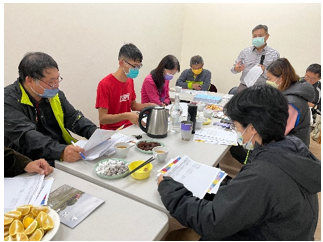
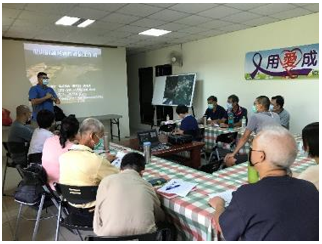
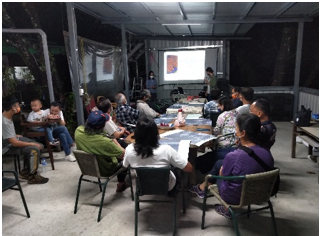
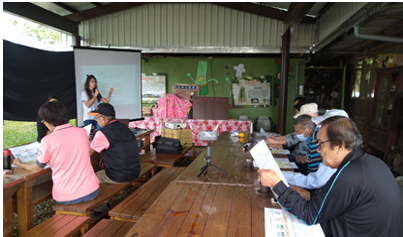
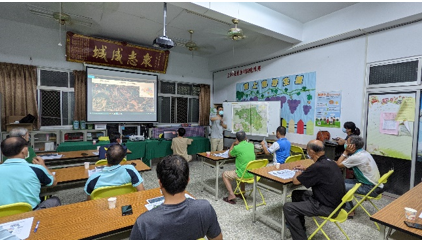
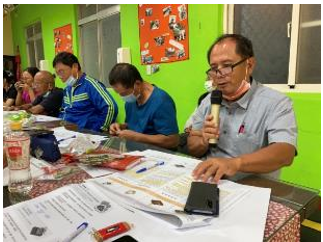
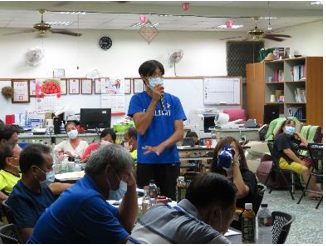
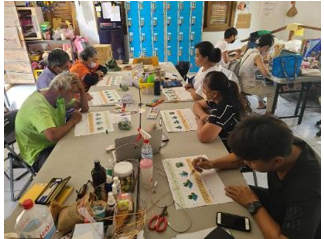
Figure 4: RAWs in each TPSI SEPLS reflected the uniqueness of local ecological and socio-cultural characteristics.
Abbreviations: DOFB – forest district office (subordinate to the Forestry Bureau), RAWs – community-based resilience assessment workshops, TPSI – Taiwan Partnership for the Satoyama Initiative
Thus, each of eight SEPLS teams worked on localising 20 indicators of resilience in SEPLS, conducting workshops with community members (~5 RAWs + one final workshop), identifying environmental and socio-ecological resources and risks in SEPLS (Figure 5), communicating RAWs results to all relevant stakeholders, and designing next steps (e.g., action plans, applications for relevant projects and funding) – Objectives (1) and (2). In 2022, for example, Gangkou SEPLS began integration of RAWs results into ACM processes by establishment of a multi-stakeholder platform, which included local Indigenous community members and Hualien Forest District Office, with the facilitation support from NDHU. Similar processes are currently under development in other TPSI SEPLS as well.
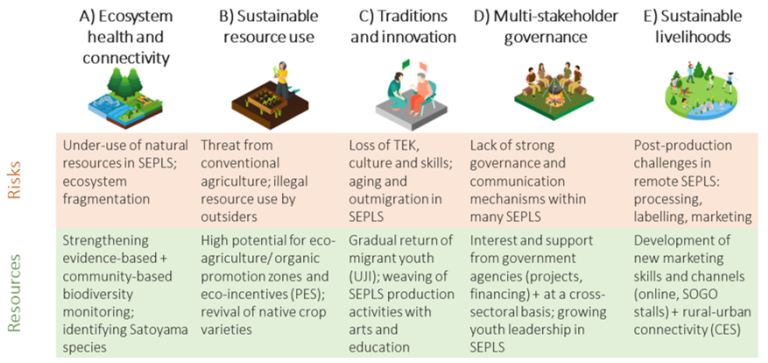
Importantly, throughout the project period, RAWs experiences have been shared and exchanged between all eight SEPLS, forest district offices and facilitating teams during online and in-person workshops and conferences: Joint Workshop on the Preliminary Results of Community-based RAWs in TPSI SEPLS (18 October 2021), the Decade of the Satoyama Initiative in Taiwan: Past, Present and Future Conference (13 November 2021), RAWs-to-ACM Experience Sharing Online Workshop (I) (22 April 2022) and RAWs-to-ACM Experience Sharing In-Person Workshop (II) (19-20 October 2022). Discussion of RAWs’ potential to become a monitoring and evaluation mechanism for TEN – Objective (3) – was also an important part of these joint activities.
Lessons learned and ways forward:
Implementation of the project (2020-2022) has allowed us to observe several valuable lessons and helped to outline the ways forward for the continuation of our efforts in 2023 and beyond.
It demonstrated the first ever development of thematically comprehensive, locally relevant, and easily comprehensible localised indicators of resilience for Taiwan’s SEPLS, and a systematic implementation of RAWs at a national scale supported and carried out across the network of a government agency – the Forestry Bureau.
SEPLS communities welcomed the project and viewed it as an opportunity to conduct identification of local issues in a participatory way, stimulate community cohesion and communication, share their concerns with the forest district offices, and collectively brainstorm future areas of work.
The project became a nationwide capacity-building effort that enhanced collaboration across TPSI network, strengthened the mentorship role of TPSI regional exchange bases, and stimulated peer-to-peer learning and connectivity across TPSI network.
We observed that successful implementation of a project of this scale relied on such important factors as: support and interest in the project outcomes from all participants (the forest district offices, SEPLS communities and RAWs facilitation teams); development of learning materials, organisation of training workshops, field visits and cross-assistance between RAWs facilitation teams; and flexible adjustments, based on the needs and specifics of each case study SEPLS and newly occurring risks, such as COVID-19.
Keeping in mind perceived challenges and feedbacks received from the SEPLS communities, we will work on improving similar efforts in the future: e.g., allowing more time for community based RAWs to ensure more in-depth discussions, finding ways to better interpret complex concepts (e.g., resilience and adaptive co-management), and translating resilience indicators into Indigenous languages.
The project piloted an initial round of RAWs for TPSI SEPLS, while these experiences are already being shared with other SEPLS across Taiwan on a SEPLS-to-SEPLS learning basis and are being integrated into monitoring and evaluation processes for TEN (2022-2025).

Acknowledgements:
We acknowledge the funding support to the January-December 2021 phase this project provided by the Satoyama Development Mechanism (SDM) 2020 and express our gratitude to the local people of eight TPSI SEPLS communities, four TSPI regional exchange bases and eight forest district offices of the Forestry Bureau – our key project partners.
Further reading:
- Bergamini, N, Dunbar, W, Eyzaguirre, P, Ichikawa, K, Matsumoto, I, Mijatovic, D, Morimoto, Y, Remple, N, Salvemini, D, Suzuki, W, et al. (2014). Toolkit for the Indicators of Resilience in Socio-Ecological Production Landscapes and Seascapes; IGES, UNDP; UNU-IAS, Bioversity International: Rome, Italy.
- Karimova P.G., Yan S.Y., Lee K.C. (2022). Chapter 4. SEPLS Well-being as a Vision: Co-managing for Diversity, Connectivity and Adaptive Capacity in Xinshe Village, Hualien County, Chinese Taipei. In: Nishi M., Subramanian S.M., Gupta H. (eds.) Biodiversity-Health-Sustainability Nexus in Socio-Ecological Production Landscapes and Seascapes (SEPLS). Springer Singapore.
- Lee K.C. (2021). Guidelines Chart for Implementation of Community-Based RAWs in TPSI SEPLS in Response to COVID-19 Pandemic.
- Lee K.C., Sun (Karimova), X.T. (P.G.), Yan S.Y., Chiu Y.H. (2021a). The Guidebook on Implementation of Community-based RAWs in TPSI SEPLS. National Dong Hwa University and the Forestry Bureau (in Chinese).
- Lee K.C., Sun (Karimova) X.T. (P.G.), Lo Y.C., Shih C.C., Chang Y.L., Chiu Y.H. (2021b). 2021-2030 Transformative Strategy Framework for the Satoyama Initiative in Taiwan. Taiwan Forestry Journal, vol. 47(2), pp. 15-22 (in Chinese). Accessed at https://www.forest.gov.tw/MagazineFile.aspx?fno=6903 on 20 January 2023.
- Lee K.C. (2022) Policy support to our Satoyama efforts: launch of the second phase of Taiwan Ecological Network (2022-2025). Taiwan Satoyama News website. Accessed at https://conservation.forest.gov.tw/EN/0002193 on 20 January 2023.
- Sun (Karimova), X.T. (P.G.); Yan S.Y., Lee, K.C. 2020. Localised resilience indicators for adaptive management: building up resilient SEPLS in Xinshe Village, Hualien County. Taiwan Forestry Journal, vol. 46 (6), pp. 58-80 (in Chinese). Accessed at https://www.forest.gov.tw/MagazineFile.aspx?fno=6873 on 20 January 2023.

